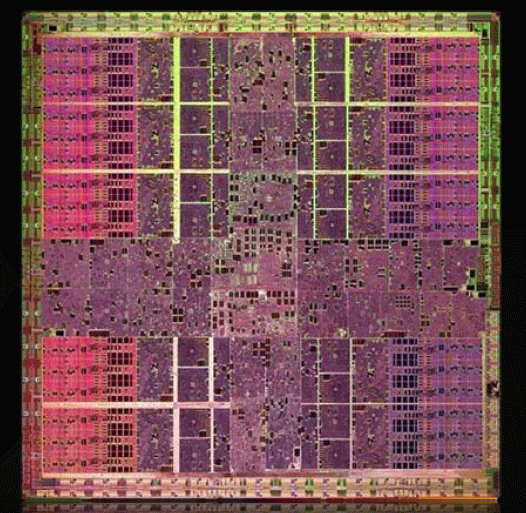 Nowadays, chips like the nVIDIA GTX285 (shown in the picture) contain
more than a billion of devices and are capable of computing more than a million
of a million (1012) of operations per second.
On the other hand, the GTX285 chip can dissipate up to 160 Watts. Think of the
heat generated by a 150 W light-bulb, in the GTX285 chip, it is concentrated
in an area of about 4 square cm!
Nowadays, chips like the nVIDIA GTX285 (shown in the picture) contain
more than a billion of devices and are capable of computing more than a million
of a million (1012) of operations per second.
On the other hand, the GTX285 chip can dissipate up to 160 Watts. Think of the
heat generated by a 150 W light-bulb, in the GTX285 chip, it is concentrated
in an area of about 4 square cm!
This example shows the challenges engineers face in designing such chips.
In this course, we will address a number of these challenges: from the technology which enabled the microelectronics revolution, to the design methodology and tools necessary to build such complex systems, to the strategies to keep the power dissipation - and the heat - to a reasonable level, to the reliability issues deriving by the aggressive device miniaturization.
The course includes some practical exercises, run in the lab, to learn to use state-of-the-art design tools and to apply the methodologies to design a System-on-Chip.
The topics covered in the course can be categorized as belonging to three tracks:
| Technology | Design Methodology | System Perspective |
|---|---|---|
CMOS TECHNOLOGY
TECHNOLOGY SCALING
MEMORY
|
DESIGN FLOW
DESIGN FOR LOW-POWER
|
WIRE ENGINEERING
CHIPS AND BOARDS
|
To better follow this course, you should be familiar with the fundamentals of design of digital systems and know a hardware description language, such as VHDL.